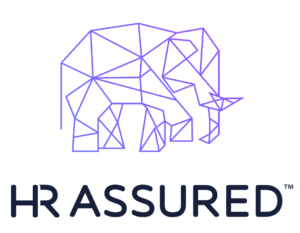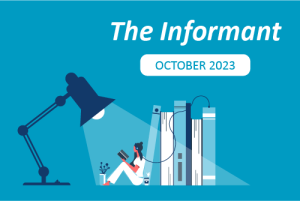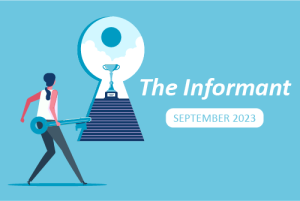Driving productivity through employee engagement
May 29, 2015The Informant: Issue 5
There is increasing debate among policy makers in Australia as to the best methods to increase Australian productivity given that it is a key driver of growth, competitiveness and resultant living standards.
The Productivity Commission’s Inquiry into the Workplace Relations Framework puts the workplace front and centre of this debate, as the Commission considers how Australia’s workplace laws help or hinder national productivity.
However when considering the concept of ‘productivity’ many commentators and critics of Australia’s industrial output focus on the continued declining of ‘multi-factorial productivity’ – this being comprised of the output produced per unit of the combined inputs of labour and capital. This may sound slightly technical. However when ‘labour productivity’ is looked at in isolation, then Australian labour productivity (output produced per hour of labour) has in fact increased1. Some critics suggest that this measurement may decline following the resourcing boom drop off. In any event there does not seem any prospect of significant macro reform of the industrial relations landscape that could help / hinder labour productivity – it’s essentially in the hands of industry to drive improvements themselves.
Enterprise productivity improvements
At an enterprise level, much can still be done within the existing legislative framework to improve performance, and therefore productivity. The link between employee engagement and productivity is not new. Indeed, employee engagement is a key priority for many senior executives, who recognise that a highly engaged workforce can increase innovation, productivity and bottom line performance while reducing costs related to attraction and retention. Yet, despite being aware of a need to improve employee engagement, many businesses get distracted by the day to day operational challenges and struggle to develop tangible ways to measure and tackle this goal.
In the first of a two-part ‘Productivity Special’, the Informant considers how businesses can measure employee engagement, before turning to some of the ways in which engagement can be improved. Next month, we will explore some case studies to provide practical tips for developing an employee engagement plan.
Productivity and employee engagement
Employee engagement is the emotional commitment an employee has to an organisation and its goals, resulting in the use of discretionary effort. An engaged employee is absorbed by and enthusiastic about their work, and so takes positive action to further the organisation’s reputation and interests. According to a growing body of research, having a highly engaged workforce not only maximises a company’s investment in human capital and improves productivity, it can also significantly reduce costs, such as turnover, that directly impact the bottom line.
But how do you know whether you have an engaged workforce? A commonly used tool is an engagement survey, however in order for the data provided to be meaningful, the questions must be tailored to an organisation. The data must then be analysed and employee engagement plans developed in accordance with the findings. Most important, however, is to regularly repeat these surveys to identify the effectiveness of engagement plans and focus resources and activities in the right areas. Tackling entrenched cultural blockages to increased engagement (eg glass ceilings) is likely to cause disruption – but is it a necessary pain to harness and facilitate career progression (hence retention) and individual motivation for a substantial portion of your workforce? Is a failure to tackle a cultural blockage indicative of management apathy towards a specific demographic of the workforce? Unlocking the potential of this workforce demographic requires careful planning but most importantly real leadership.
On an individual level, regular performance reviews can be used as a tool for assessing an employee’s engagement. This links in to a common issue that our clients report to us as impacting on employee engagement and performance, and therefore productivity – Line Manager capability. Line Managers are key to driving employee engagement and performance. It is therefore essential that they are provided with the necessary training to ensure they understand the importance of employee engagement, including through regular feedback, and have the skills to identify disengaged employees and to implement measures to improve their engagement.
Tackling employee engagement
Each stage of the employment life-cycle is relevant. It is vital to have a robust hiring process that places the right people (from both a skills and cultural fit perspective) in the right roles. The next step is to structure employment conditions that build commitment to the success of the business, reward for that commitment and performance through incentives.
As the employment relationship develops, communication is key. Employers need to ensure that employees have clear and fair expectations of their role in the business and how their contribution is recognised and rewarded. There is then a reasonable basis for employees to measure the company’s efforts and to decide how much discretionary effort to invest in their role. This includes avoiding inflating an employee’s expectations of their role through ‘creative’ job titles; although boosting someone’s title can be a low cost motivator in the short term, if it creates false expectations of a job’s value that are later undermined, disengagement can quickly ensue.
Effective communication is also key to ensuring individuals have a clear understanding of how their role contributes to the overall company strategy, so that individual goals can align with company goals. This requires regular updates regarding strategy by senior executives, reinforced through Line Managers, as well as ensuring that assessments, performance appraisals, training and development are all aligned with company goals.
Recognising the warning signs of disengagement is highly important, and can be achieved through regular surveys, one on one conversations and structured performance reviews.
Next month, we will explore this process in more detail, considering some case studies of various initiatives that can directly impact on employee engagement and therefore drive improvements to productivity.
Are you concerned about your workplace culture? Would you like to talk to us about strategies could can use to improve the culture in your business? Please call us on (02) 9922 5188 or email us at info@fcbgroup.com.au.
1 PC Productivity Update April 2014

























